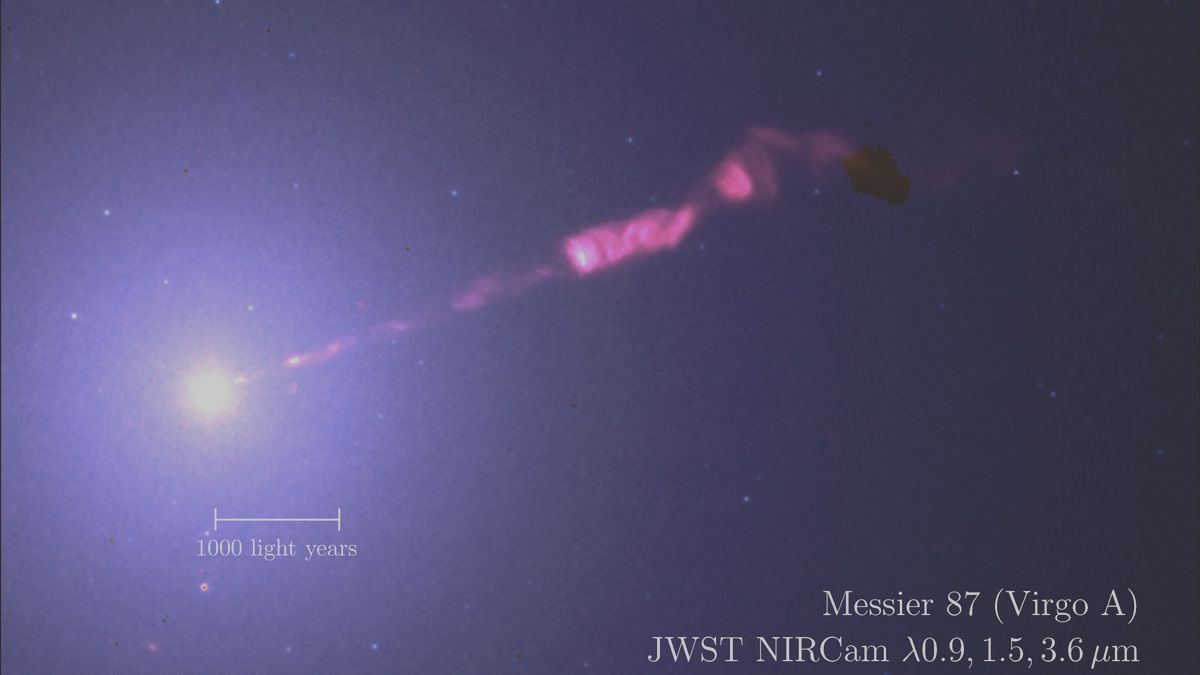Today, two new papers about 3I/ATLAS were posted online. The first (accessible here) shows the spectrum of 3I/ATLAS, taken the 4.1-meter SOAR Telescope in Chile during the night of July 3, 2025 when the object’s distance from the Sun was 4.4 times the Earth-Sun separation. The reflected sunlight shows reddening, but no discernible gas emission from typical cometary molecules such as CN, C3, C2, CO+ or neutral oxygen atoms. The authors note: “the paradoxical situation of early onset coma without evidence of sublimation tracers, calls for other dust-liberating mechanisms that ancient interstellar objects may be subjected to.”
The second new paper (accessible here) by David Jewitt and collaborators, analyzes the first images taken of 3I/ATLAS by the Hubble Space Telescope on July 4–5, 2025. The paper concludes that 3I/ATLAS is a comet with a small nucleus, between 0.32 and 5.6 kilometers in diameter, surrounded by a much larger cloud of dust. This nucleus size estimate is consistent with the prediction in my first published paper on 3I/ATLAS (accessible here). There I estimated the nucleus diameter to be 1.2 kilometers in case 3I/ATLAS is a comet, based on the limited reservoir of rocky materials in interstellar space.
Surprisingly, the Hubble image of 3I/ATLAS shows diffuse emission ahead of its motion towards the Sun rather than a trailing tail as expected from a typical comet. In an essay from August 2, 2025, I suggested that a forward glow could be explained if the nucleus does not spin rapidly. In case the object’s surface is exposed to the Sun, it would maintain a hot dayside from which most of the evaporation of dust takes place. This explanation is indeed adopted in the new paper.
The latest monitoring data from ground-based telescopes (accessible here) implies a rotation period of 16.16 (+/-0.01) hours for 3I/ATLAS. During half of this rotation period, the dayside of 3I/ATLAS turns around to become the nightside. During this half-period of 8 hours, the evaporated dust crosses a distance of 10,000 kilometers from the nucleus, corresponding to 0.35 arcseconds in the Hubble image. The dayside surface of the nucleus must cool faster than 8 hours or else the rotation would have averaged out the direction of the dust outflow from the nucleus on the scales that the Hubble image shows it elongated in the forward direction.
The existence of a glow ahead of 3I/ATLAS but no evidence of gas molecules is puzzling. As the object gets closer to the Sun, it will get brighter. Upcoming data from the Webb telescope holds the potential to detect its infrared emission and unravel its detailed nature.
ABOUT THE AUTHOR
Avi Loeb is the head of the Galileo Project, founding director of Harvard University’s — Black Hole Initiative, director of the Institute for Theory and Computation at the Harvard-Smithsonian Center for Astrophysics, and the former chair of the astronomy department at Harvard University (2011–2020). He is a former member of the President’s Council of Advisors on Science and Technology and a former chair of the Board on Physics and Astronomy of the National Academies. He is the bestselling author of “Extraterrestrial: The First Sign of Intelligent Life Beyond Earth” and a co-author of the textbook “Life in the Cosmos”, both published in 2021. The paperback edition of his new book, titled “Interstellar”, was published in August 2024.
Source link


